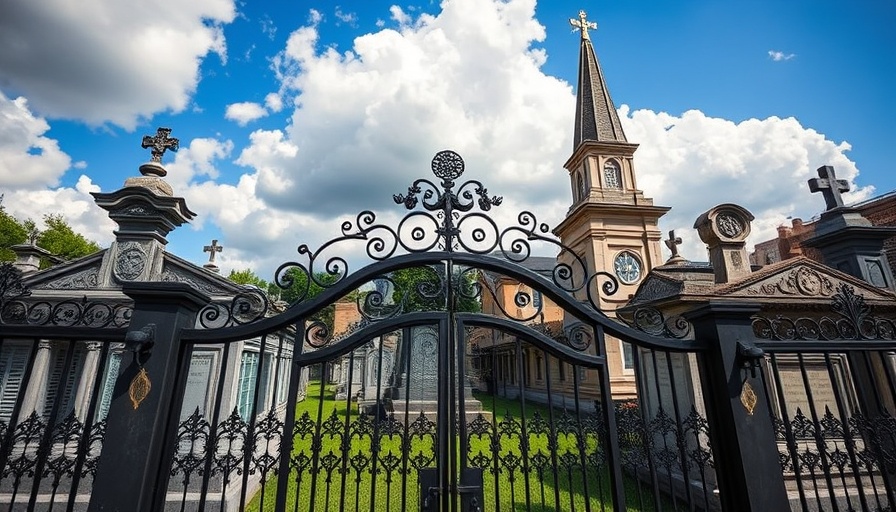
Unveiling the Mystique of New Orleans Cemeteries
New Orleans, a city renowned for its vibrant culture, intriguing history, and rich traditions, offers a unique experience for visitors—especially in its cemeteries. With a legacy of above-ground burials inherited from its French and Spanish colonial past, the crypt-lined streets of New Orleans are more than final resting places; they are gateways into the city’s soul. In this article, we'll explore how to best appreciate these historical landmarks, following the insights from the enlightening video 'How to Visit New Orleans Cemeteries | Tips from a Local Tour Guide.'
In 'How to Visit New Orleans Cemeteries | Tips from a Local Tour Guide,' the discussion dives into the significance and mystery of these captivating sites, exploring key insights that sparked deeper analysis on our end.
Why Explore New Orleans’ Above-Ground Cemeteries?
New Orleans cemeteries are a testament to the city’s distinct approach to death and memorialization. With tombs that resemble small houses and an intricate history of burial practices, they serve as both tourist attractions and sacred spaces. Each cemetery tells a different story, from the iconic St. Louis Cemetery No. 1, which houses the tomb of the legendary voodoo priestess Marie Laveau, to the tranquil pathways of Lafayette Cemetery No. 1, a favored spot for both locals and film crews alike.
Top Three Cemeteries to Visit
When visiting New Orleans, it's crucial to know which cemeteries allow tours and which ones you can explore on your own:
- St. Louis Cemetery No. 1: This historic cemetery, founded in 1789, is the oldest in the city. Access is limited to guided tours due to vandalism restrictions, making it essential to plan ahead. Expect to pay homage to not only the voodoo queen but also the intricate architecture that reflects the city’s French heritage.
- Lafayette Cemetery No. 1: Nestled in the Garden District, Lafayette has been featured in many films due to its stunning aesthetics. Though currently closed for renovations, its storied past remains a draw for those seeking to explore more than just the physical space.
- St. Louis Cemetery No. 3: This cemetery is more accessible than the others. Visitors can stroll among the impressive monuments and enjoy the artistic features that echo the rich history of the Big Easy without needing a guide.
Guidelines for a Respectful Visit
While exploring these sites, it’s vital to remember that they are active cemeteries and spaces where families mourn their loved ones. Show respect by refraining from loud noises, avoiding the deliberate touching of tombs, and keeping a distance from families who might be visiting. Many cemeteries ban food and drinks to maintain the sanctity of these spaces, so be sure to follow any posted rules to enhance your experience.
Conclusion: Why You Should Visit
Exploring New Orleans cemeteries unveils the city’s unique intersection of culture, history, and spirituality. With stories of voodoo, burial practices, and community remembrances woven into the very fabric of these hallowed grounds, a visit offers a deeper understanding of what makes this city vibrantly alive, even in death.
Are you ready to experience the captivating lore and history of New Orleans? Don’t miss out on your chance to connect with the past during your visit. And if you have stories about cemeteries or unique burial practices from your travels, share them with the community—your insights might just enrich someone else's journey!
 Add Row
Add Row  Add
Add 




 Add Row
Add Row  Add
Add 

Write A Comment